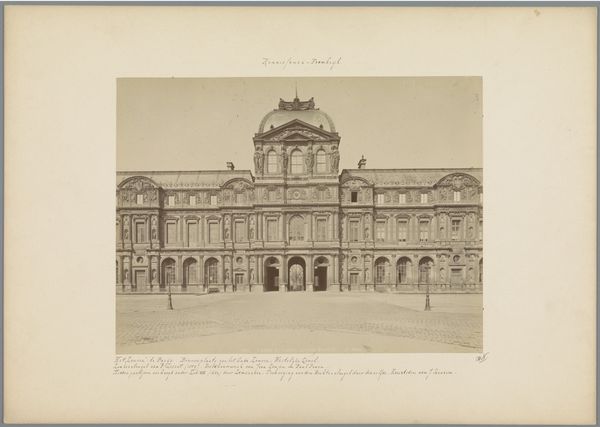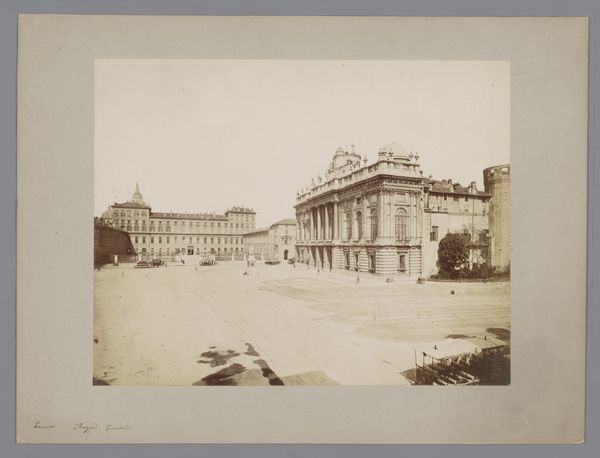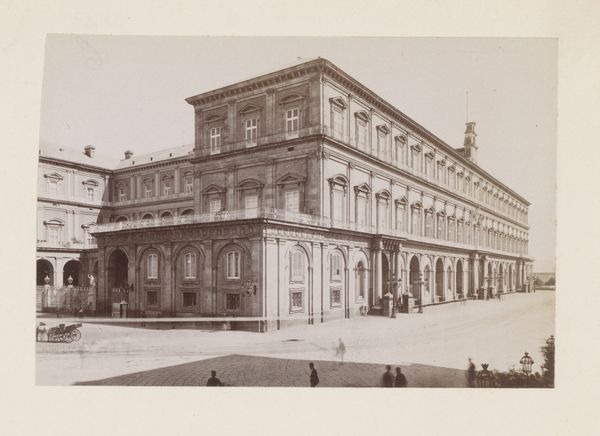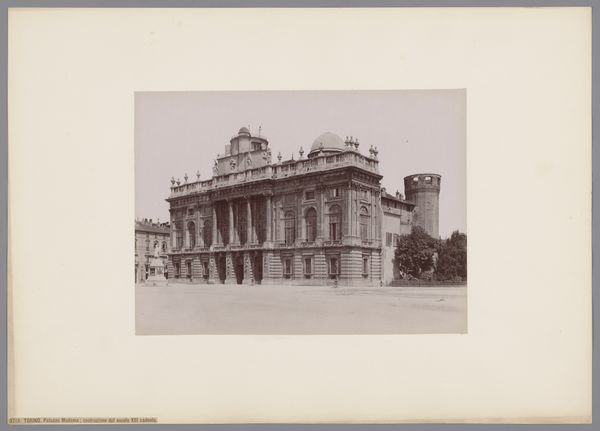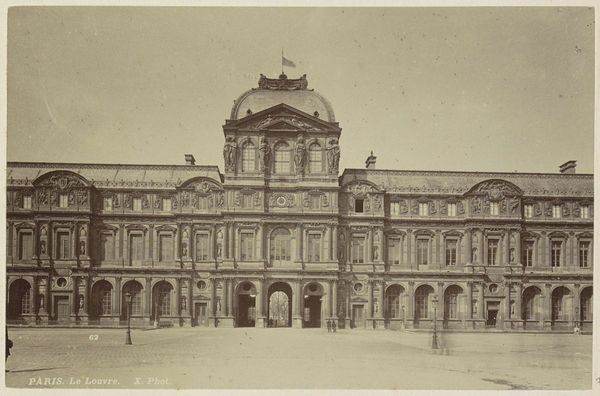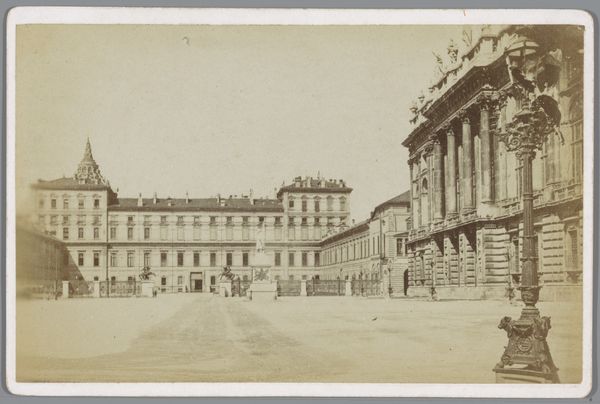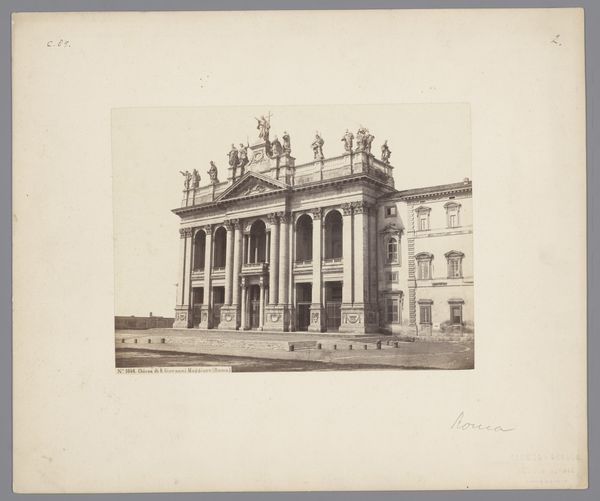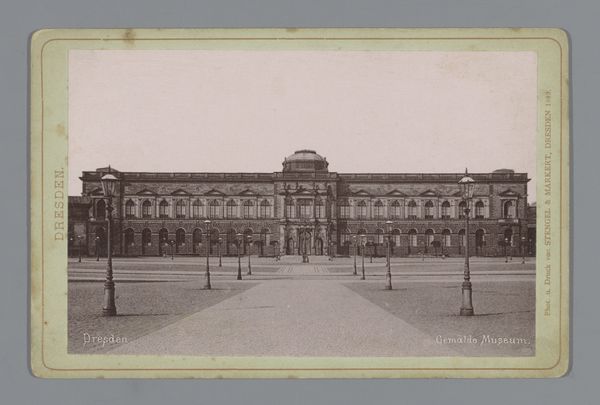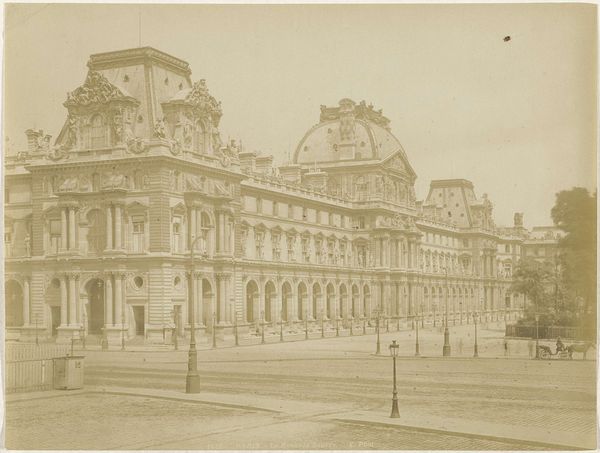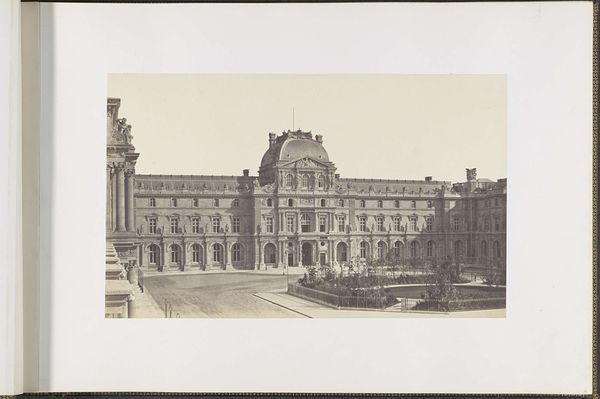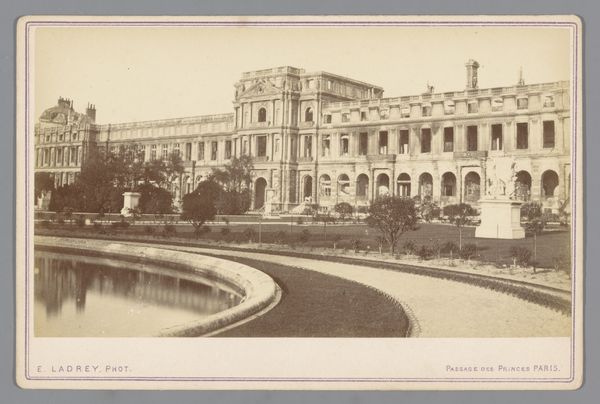![[The Tuileries after the Commune] by Hippolyte-Auguste Collard](/_next/image?url=https%3A%2F%2Fd2w8kbdekdi1gv.cloudfront.net%2FeyJidWNrZXQiOiAiYXJ0ZXJhLWltYWdlcy1idWNrZXQiLCAia2V5IjogImFydHdvcmtzL2RmMmIxYmU2LTFlNWQtNDU1NC1hZjhmLWVjNGM4OWIwODk1NC9kZjJiMWJlNi0xZTVkLTQ1NTQtYWY4Zi1lYzRjODliMDg5NTRfZnVsbC5qcGciLCAiZWRpdHMiOiB7InJlc2l6ZSI6IHsid2lkdGgiOiAxOTIwLCAiaGVpZ2h0IjogMTkyMCwgImZpdCI6ICJpbnNpZGUifX19&w=3840&q=75)
Copyright: Public Domain
Editor: This photograph, taken by Hippolyte-Auguste Collard in 1871, is titled "The Tuileries after the Commune." It's a rather bleak scene, with a prominent building seemingly ravaged by some kind of disaster. What's the story behind this photograph? Curator: The photograph captures a pivotal moment in Parisian history. The Tuileries Palace, once a symbol of French royalty and imperial power, was largely destroyed by fire during the Paris Commune in 1871. Collard's image is not just a photograph; it's a historical document showing the aftermath of intense socio-political upheaval. What does it suggest about the power of photography at the time? Editor: I guess it means it's not just about capturing pretty images; it’s about documenting history in a raw, unfiltered way, right? The photo feels strangely devoid of people. Curator: Exactly. The absence of people is striking. It emphasizes the desolation and amplifies the feeling of loss. Collard’s photograph transcends mere documentation. Consider how the ruin itself becomes a charged symbol within the public consciousness, particularly at a time of rebuilding and redefining national identity after such political division. Editor: So, seeing this image back then would have stirred up very strong political feelings. Was photography used often in this way at that time? Curator: Increasingly so. Photography’s rise coincided with a period of rapid social and political change. The medium became a powerful tool for shaping public opinion, documenting events, and constructing narratives around historical occurrences like the Commune. Collard’s image participated in this construction, presenting a specific perspective on the events. It begs the question: whose narrative does it serve? Editor: That's fascinating, how one image can hold so much political weight! I’ll definitely look at photography from that era with fresh eyes now. Curator: And consider, too, how ruins, captured in photography, become powerful emblems of resilience, prompting reflection on a society's past and future. Thanks to you, I’ve gained a renewed appreciation for how images reflect historical and cultural forces.
Comments
No comments
Be the first to comment and join the conversation on the ultimate creative platform.

